The Congress of the Argentine Nation, an architectural gem from the early 20th century
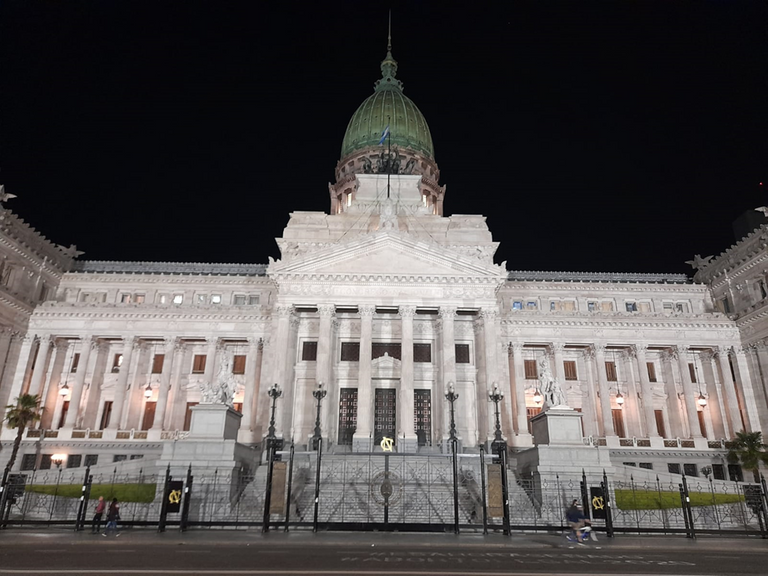
Main facade of the Congress (Fachada principal del Congreso)
Dear friends, readers and curators of HIVE, it is a pleasure for me to deliver this post dedicated to showing the architectural beauty of the Argentine National Congress, an iconic work of the country where the highest political decisions of the South American nation are made. The photos were taken by my sister and her son very recently. I have taken the liberty of adding some photos of the interior of the Congress, taken from the Internet, since there was no possibility that my relatives could obtain them in situ.
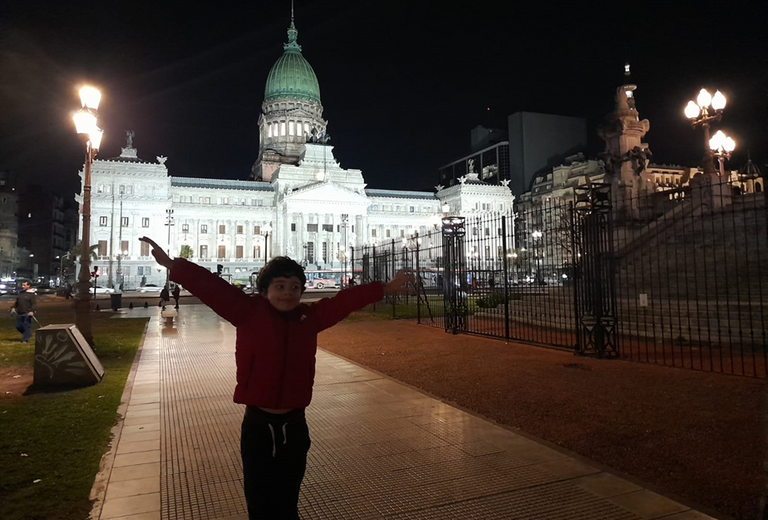
In the foreground my great-nephew raising his arms and in the background the dome of the Congress, whose iron lattice structure rests on a base with four porticoes and is clad in copper which, in contact with the atmosphere, acquires its characteristic green color (En primer plano mi sobrino-nieto levantando sus brazos y al fondo la cúpula del Congreso, cuya estructura reticulada de hierro se apoya en un basamento de cuatro pórticos y está revestida en cobre que, en contacto con la atmósfera, adquiere su color verde característico)
Leaving Buenos Aires on a cold night, my relatives stopped, before continuing on their way to the airport, to appreciate an architectural jewel of the city such as the National Congress building. As it was night, they did not have the opportunity to see and photograph the Congress inside.
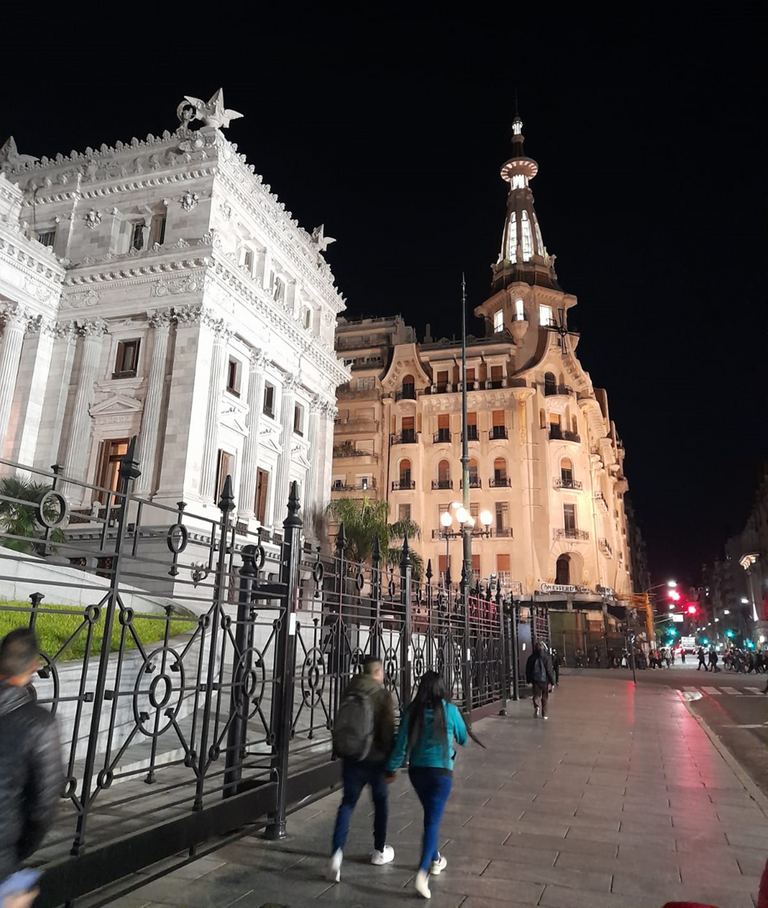
To one side of the Congress is “La Confitería del Molino”, a building designed in the art nouveau style by the architect Francisco Gianotti, in 1916, with columns covered in marble. It is part of the national historical monuments since 1997 (A un costado del Congreso se encuentra “La Confitería del Molino”, edificio diseñado al estilo art noveau por el arquitecto Francisco Gianotti, en 1916, con columnas revestidas de mármol. Forma parte de los monumentos históricos nacionales desde 1997)
In 1895 an international project competition was held for the construction of the Argentine National Congress, which was won by the architect Víctor Meano who was inspired by the Capitol in Washington, and who was unfortunately assassinated in 1904, which is why he was the architect Belgian Julio Dormal who concluded the work, respecting the original project, although Frenchifying the whole. The construction of this palace began in 1898, in the block that bordered Entre Ríos, Combate de los Pozos, Victoria and Rivadavia streets. Officially the legislative palace was inaugurated in 1906, but it took 40 more years to complete the work in its entirety.
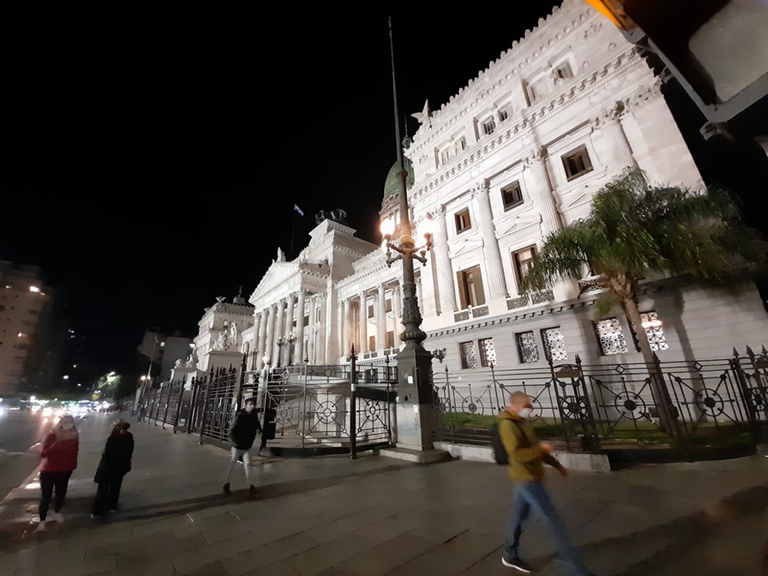
View, from one of the corners, of the Federal Palace (Vista, desde una de las esquinas, del Palacio Federal)
The congress shows a dome 80 meters high and the style corresponds to the "high Italian academicism" of the late nineteenth century, although other sources add eclecticism to Italian academicism, with a strong presence of French Classicism. The palace is adorned with many details such as Greco-Roman marble sculptures and other ornaments. The entire work is clad in gray limestone, with a granite base.
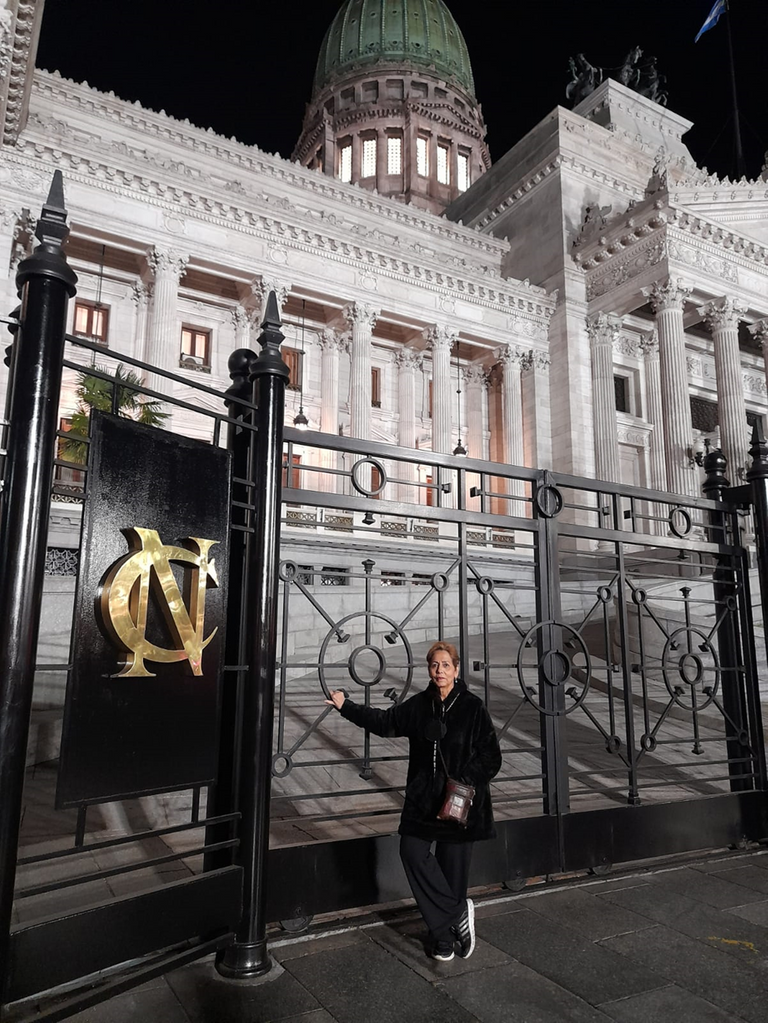
My sister Myrna poses at the ceremonial entrance of the Congress of the Argentine Nation (Mi hermana Myrna posa en la entrada ceremonial del Congreso de la Nación Argentina)
Once the construction of the congress headquarters began, it was decided, in 1905, to build a square on the surrounding land, which we appreciate today. The square was completed long before the Congress building was completed in 1946, at which time the marble cladding of the exterior of the Legislative Palace was laid.
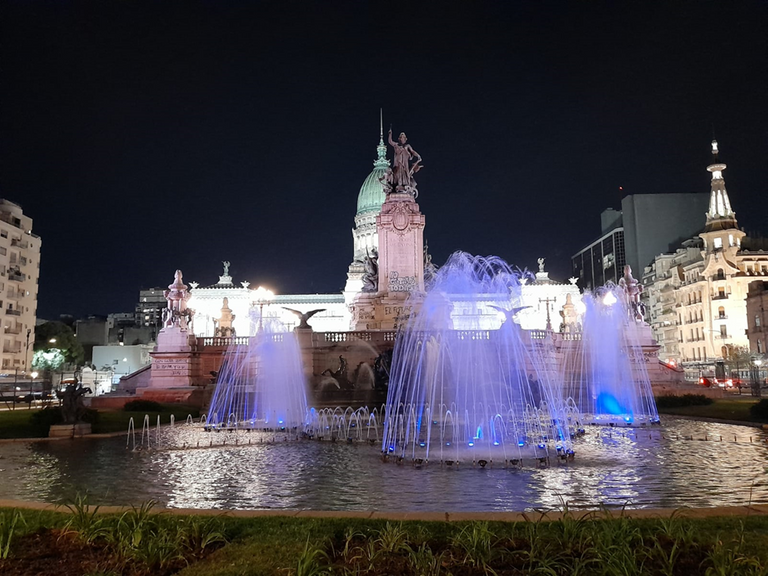
In the center of the square is the Plaza del Congreso that represents the Argentine Republic, with an allegory that is a statue that steps on a snake, representative of evil, whose left arm is supported on a plow (symbol of work) and in his right hand he shows a laurel branch -symbol of glory (En el centro de la plaza se encuentra la plaza del Congreso que representa a la República Argentina, con una alegoría que es una estatua que pisa a una serpiente, representativa del mal, cuyo brazo izquierdo está apoyado sobre un arado (símbolo del trabajo) y en su mano derecha muestra una rama de laurel, símbolo de la gloria)
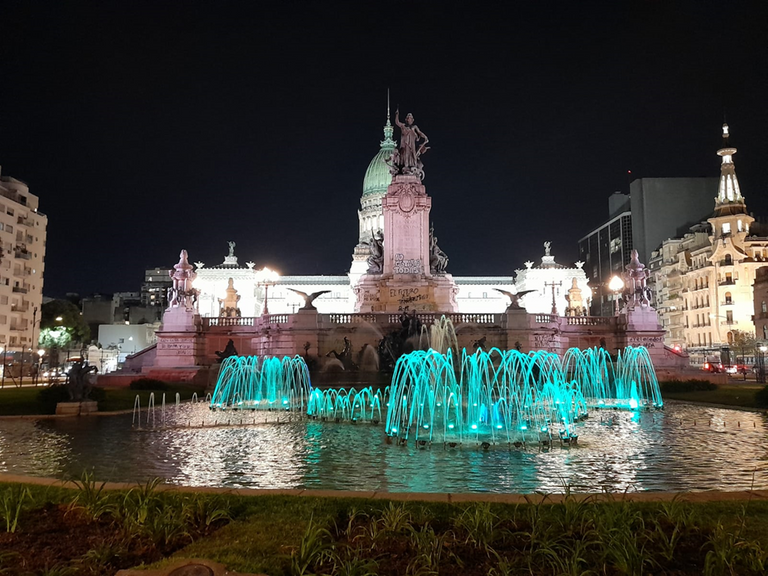
In the center of the square there is a statue raised on a rectangular pedestal with 13.75 meters. high in stone from Nancy, which is a work of the Belgians D'huique and Jules Lagae (En el centro de la plaza se encuentra una estatua levantada sobre un pedestal rectangular con 13,75 mts. de altura en piedra de Nancy, la cual es una obra de los belgas D’huique y Jules Lagae)
The Congress building was declared a "National Historical and Artistic Monument" in 1993 by the government, as it was considered "a benchmark of the nation's cultural identity" and the conservation and maintenance of "its historical and aesthetic values" was stipulated.
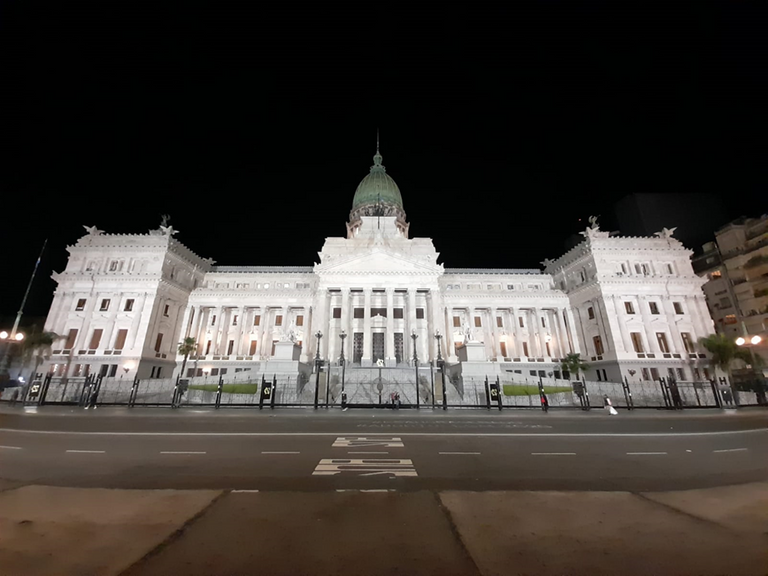
The Congress building, in all its splendor, photo taken from Avenida Entre Ríos. The palace has 250 rooms and the country's first escalator was built in its basement. (El edificio del Congreso, en todo su esplendor, foto tomada desde la Avenida Entre Ríos. El palacio posee 250 habitaciones y en su sótano se construyó la primera escalera mecánica del país)
Sources consulted
https://www.congreso.gob.ar/palacio.php

In the foreground the Manifesto of the Congress to the peoples of the Confederation, then the stairs leading to the entrance of the Congress with its splendid columns (En primer plano el Manifiesto del Congreso a los pueblos de la Confederación, luego las escaleras que conducen a la entrada del Congreso con sus espléndidas columnas)
El Congreso de la Nación Argentina, joya arquitectónica de inicios del siglo XX

On top of the six Corinthian columns, in front of the dome, is the Quadriga, a bronze sculpture 8 meters high and weighing 20 tons made by the sculptor Víctor de Pol that represents the triumphant Republic, in a chariot pulled by four horses (Encima de las seis columnas corintias, delante de la cúpula, se encuentra la Cuadriga, escultura de bronce de 8 metros de altura con un peso de 20 toneladas realizada por el escultor Víctor de Pol que representa a la República triunfante, en un carro tirado por cuatro caballos)
Estimados amigos, lectores y curadores de HIVE, es un placer para mí entregar este post dedicado a mostrar la belleza arquitectónica del Congreso Nacional Argentino, obra icónica del país donde se toman las más altas decisiones políticas de la nación sudamericana. Las fotos fueron tomadas por mi hermana y su hijo hace muy poco tiempo. Me he tomado la libertad de añadir algunas fotos del interior del Congreso, sacadas de Internet, ya que no había posibilidad de que mis familiares pudieran obtenerlas in situ.
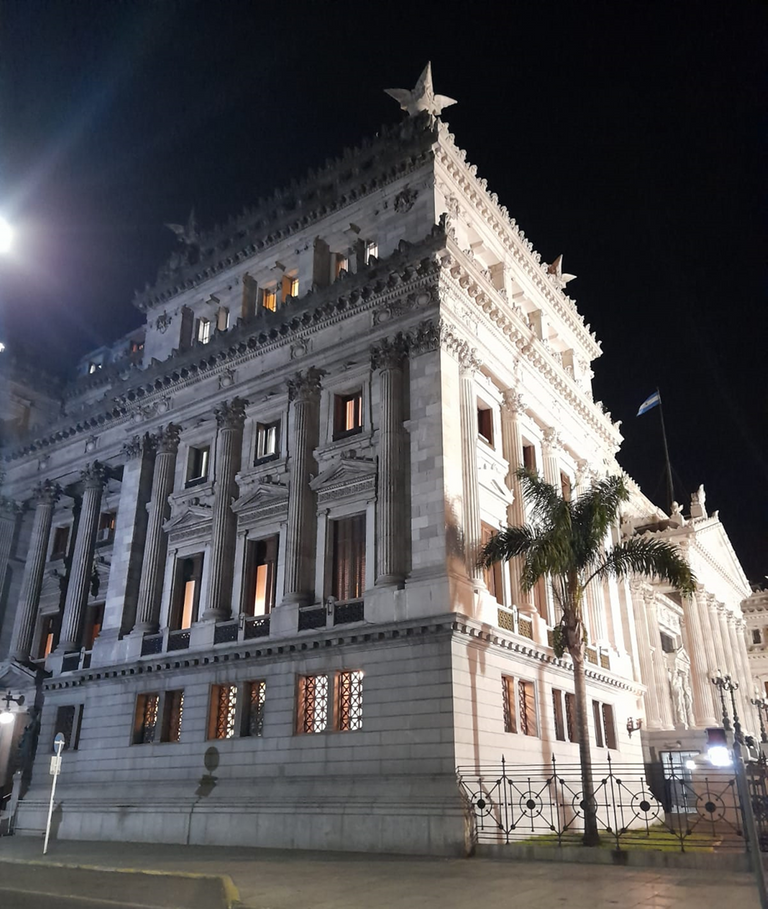
One of the corners of the Legislative Palace on whose roof you can see some sculptures called Winged Victories by Víctor de Pol (Una de las esquinas del Palacio Legislativo en cuyo techo se pueden apreciar algunas esculturas llamadas Victorias Aladas de Víctor de Pol)
Saliendo de Buenos Aires en una fría noche, mis familiares se detuvieron, antes de continuar camino al aeropuerto, para apreciar una joya arquitectónica de la ciudad como es el edificio del Congreso Nacional. Como era de noche, no tuvieron la oportunidad de ver y fotografiar el Congreso por dentro.
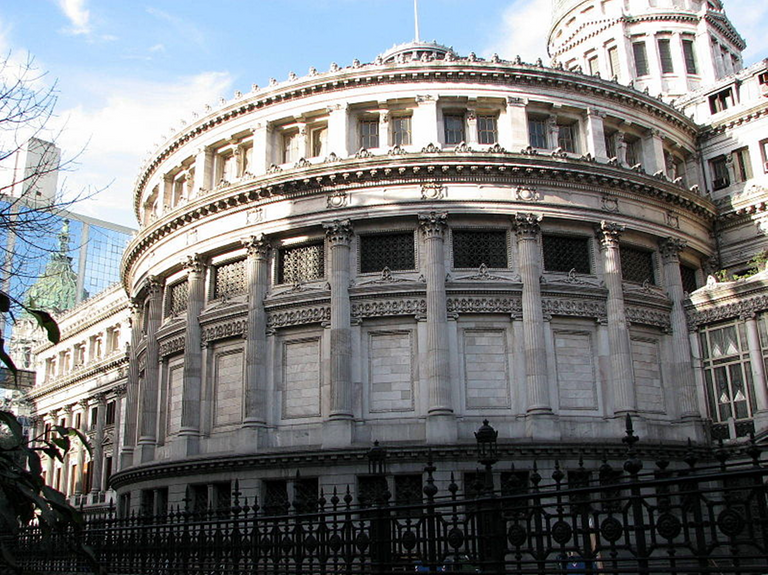
Structure in a semicircle of 26 m in diameter, where the Chamber of Deputies is located (Hemiciclo de 26 m de diámetro donde se encuentra la Cámara de Diputados) Image
En 1895 se realizó un concurso internacional de proyectos para la construcción del Congreso Nacional argentino, el cual fue ganado por el arquitecto Víctor Meano quien se inspiró en el Capitolio de Washington, y quien fuera lamentablemente asesinado en 1904, razón por la cual fue el arquitecto belga Julio Dormal quien concluyó la obra, respetando el proyecto original, aunque afrancesando el conjunto. La construcción de este palacio se comenzó en 1898, en la manzana que limitaba las calles Entre Ríos, Combate de los Pozos, Victoria y Rivadavia. Oficialmente el palacio legislativo se inauguró en 1906, pero fueron necesarios 40 años más para concluir la obra en su totalidad.
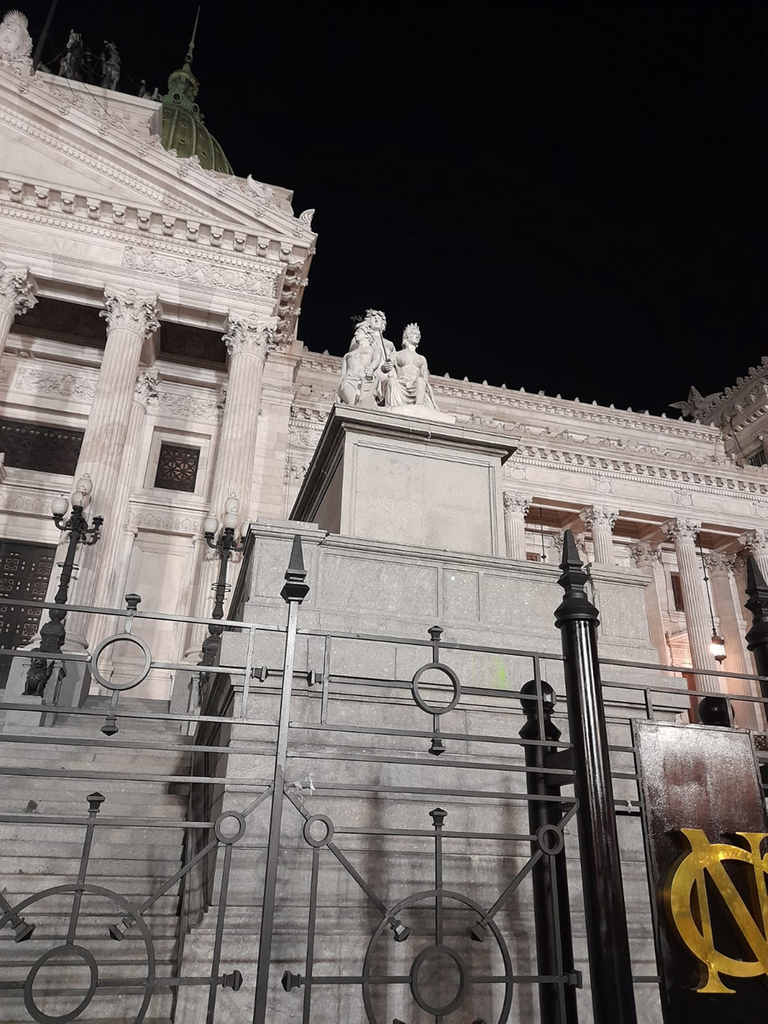
One of the works of the sculptress Lola Mora that adorn the Congress (Una de las obras de la escultora Lola Mora que adornan el Congreso)
El congreso muestra una cúpula de 80 metros de altura y el estilo corresponde al “alto academicismo italiano” de finales del siglo XIX, aunque otras fuentes agregan al academicismo italiano, el eclecticismo con fuerte presencia del Clasicismo Francés. El palacio está adornado con muchos detalles como esculturas greco-romanas de mármol y otros ornamentos. Toda la obra está revestida de piedra caliza gris, con una base de granito.
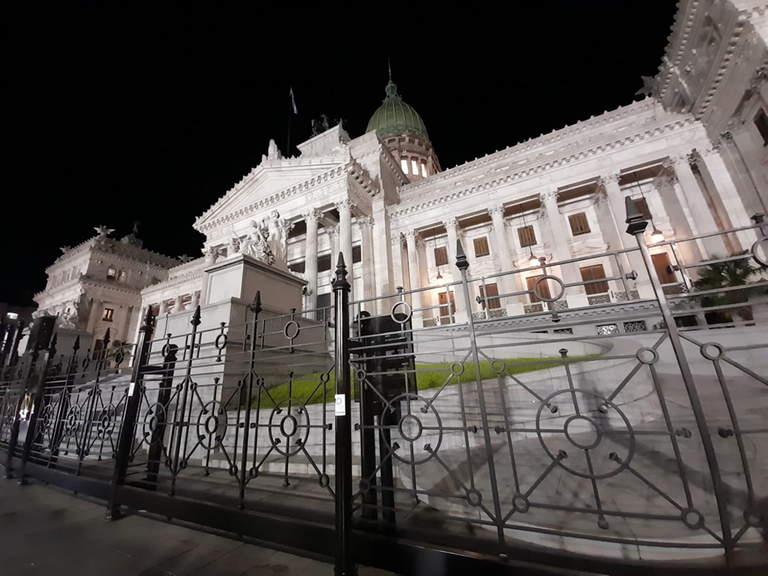
Partial view of the Legislative Palace (Vista parcial del Palacio legislativo)
Una vez iniciada la construcción de la sede del congreso, se decidió, en 1905, levantar una plaza en los terrenos aledaños, que apreciamos hoy en día. La plaza fue terminada mucho antes de que se concluyera el edificio del Congreso en 1946, momento en el cual se colocó el revestimiento de mármol del exterior del Palacio legislativo.
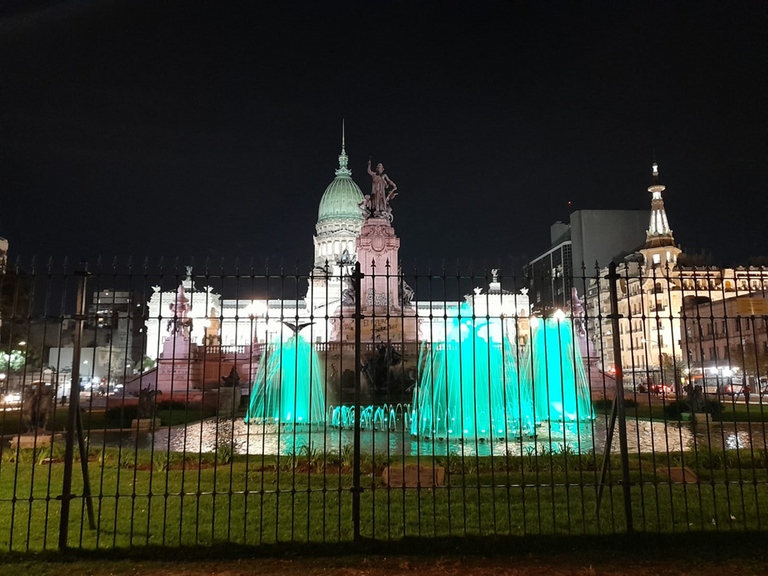
Panoramic view of the Congress and its square (Panorámica del Congreso y su plaza)
El edificio del Congreso fue declarado “Monumento histórico y artístico nacional” en 1993 por el gobierno, por considerársele “un referente de la identidad cultural de la nación” y se estipuló la conservación y mantenimiento de “sus valores históricos y estéticos”.
Statue of the lions pulling the Cibeles cart, on the north side of the building (Estatua de los leones tirando el carro de Cibeles, al lado norte de la edificación)
Fuentes consultadas
https://www.congreso.gob.ar/palacio.php
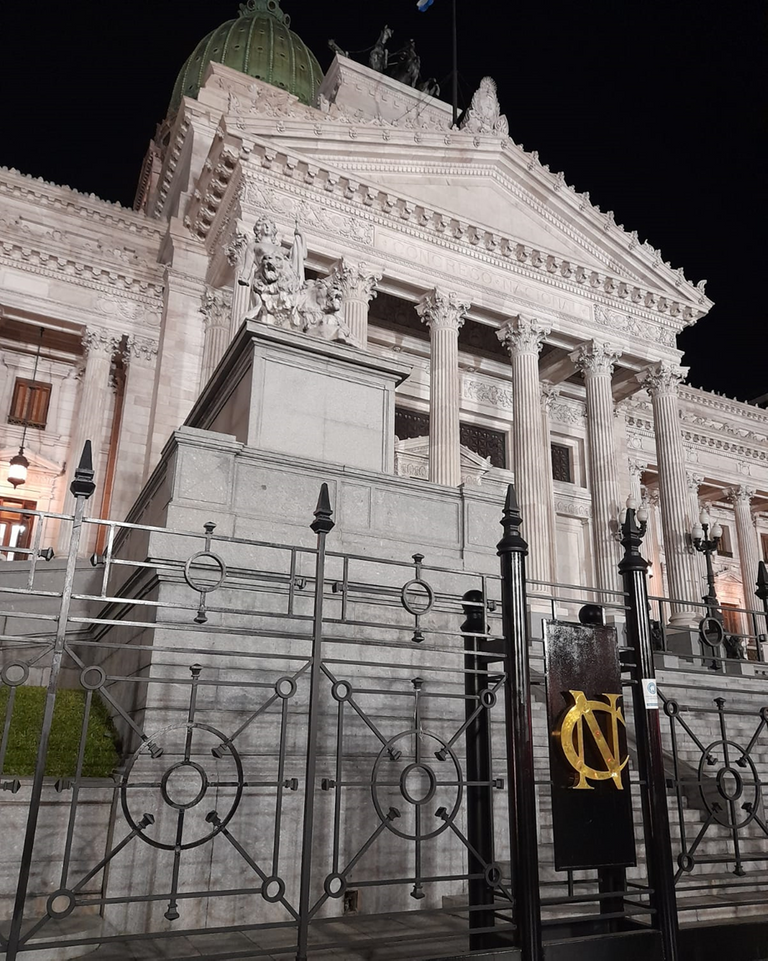
Right at the entrance is the shield or emblem of Congress (Justo en la entrada está el escudo o emblema del Congreso)
Photo gallery (Galería de fotos

Back view of Congress Square (Vista posterior de la plaza del Congreso)
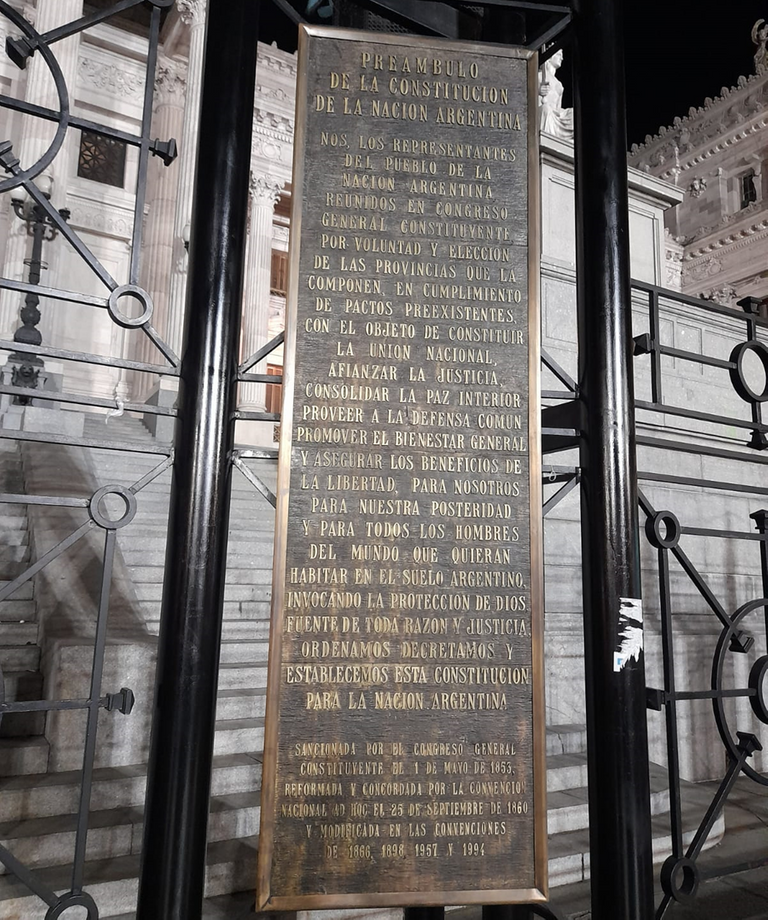
Plaque that reads the preamble of the Argentine Constitution, in the protective bars of the Congress (Placa que reza el preámbulo de la Constitución argentina, en las rejas protectoras del Congreso)
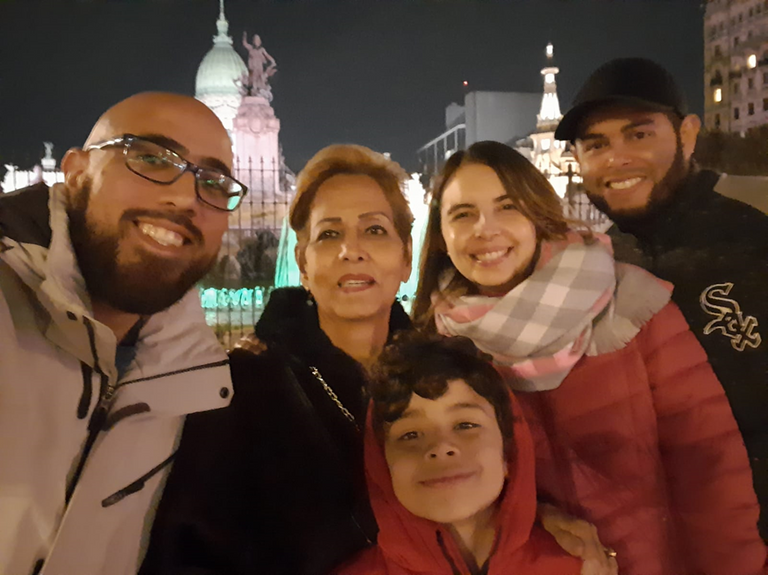
My relatives in the Plaza del Congreso (Mis familiares en la plaza del Congreso)
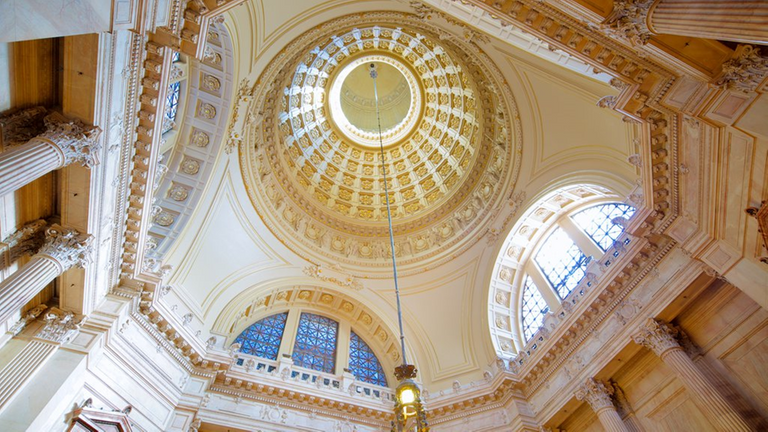
Senate roof (Techo del Senado) Image
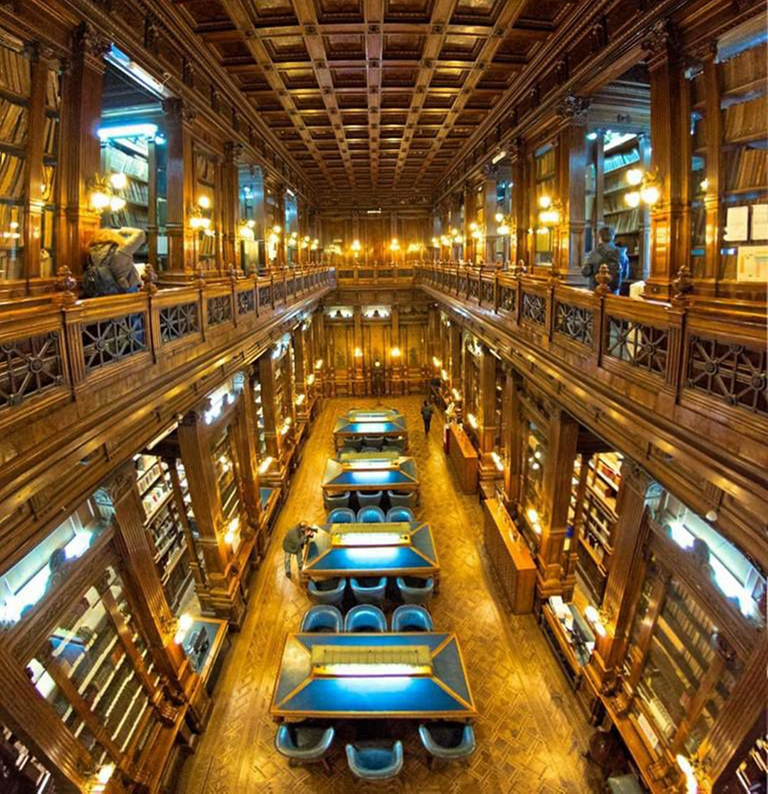
Library of Congress Reading Room founded in 1917, clad, carved, and polished entirely in Italian walnut (Salón de lectura de la Biblioteca del Congreso fundada en1917, revestido, tallado y lustrado en su totalidad con nogal italiano) Image
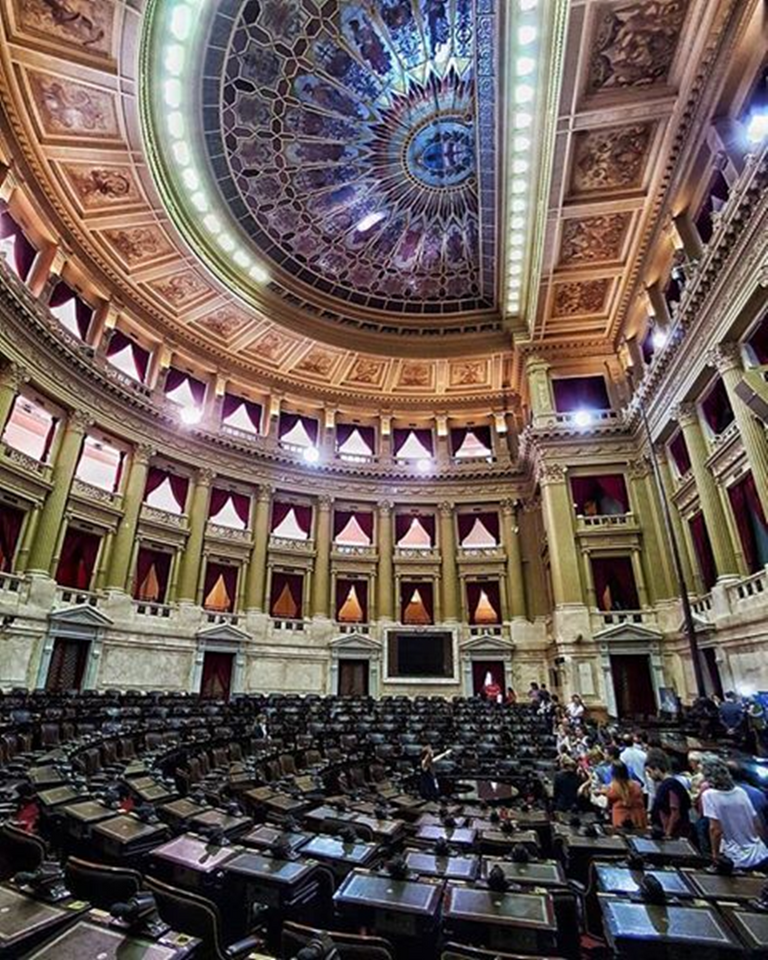
The Chamber of Deputies of the Congress has three floors with balconies, it is a part of the Congress where light-toned marble and monumental columns predominate (La Cámara de diputados del Congreso tiene tres pisos con balcones, es un parte del Congreso donde predominan el mármol de tono claro y las columnas monumentales) Image






















Do you know the legal name of @themarkymark ???? It is needed to contact his local police station. Any information to his whereabouts would be much appreciated.
Congratulations, your post has been added to Pinmapple! 🎉🥳🍍
Did you know you have your own profile map?
And every post has their own map too!
Want to have your post on the map too?
Good afternoon dear friends of Pinmapple, thank you for placing my post on your map.
Good morning friend and colleague @besamu excellent publication, interesting story and beautiful photographs. Congratulations. Receive a strong spiritual hug full of blessings, positive energy and lots of light.
Hello dear teacher and friend, thank you very much for your laudatory words. Receive in return a brotherly hug
Hola estimado profesor y amigo, muchas gracias por sus elogiosas palabras. Reciba en retorno un fraternal abrazo
Great posting & pictures! You make me want to travel to Buenos Aires just to see this building!
Good afternoon from Venezuela, dear Parmengo, I hope that your wishes to visit the wonderful city of Buenos Aires can be fulfilled. I appreciate your words of support. I wish you a happy week
Hello @besamu
It is a sample of the architecture and its majesty. The surroundings are of course a sample of your good work and sublime work. Thank you very much for sharing and making posts of real quality,by the way,you have a fabulous family 😁
Best Regards
Un saludo desde España, tierra hermana.
Hi dear Garvi, thank you very much for your kind words for my post and my family. Indeed, the Argentine Capitol building is truly spectacular and, as you very well point out, "proof of good work and sublime work", which I summarize with the phrase "splendid accompaniment". Spain brings me good memories for me because I did my doctoral studies there. Receive a fraternal greeting
Hola estimada Garvi, muchas gracias por sus elogiosas palabras para con mi post y mi familia. En efecto, el edificio del Capitolio argentino es realmente espectacular y, como usted muy bien lo señala "prueba del buen hacer y del sublime trabajo", que resumo con la frase "espléndido acompañamiento". España me trae buenos recuerdos pues allí realicé mis estudios doctorales. Reciba un fraternal saludo
It is undoubtedly a jewel of architecture, a world heritage site. It reminds me of when I had the opportunity to visit the city of Havana, and I could appreciate the capitol of the capital, which are very similar structures like the one you present, as well as the capitol of Washington. Although for that occasion I could not enter the capitol because it was under maintenance. Greetings !
Hello Wilfredocav, indeed the Washington Capitol served as an example for the construction of the Argentine Capitol, I imagine that this must be the case of Havana, because as you point out they are very similar from the point of view of their structures. Greetings and thanks for your comment
Greetings @besamu I congratulate you for this great display of the Congress of the Argentine Nation, your family knew how to take advantage of the moment to stop and admire this important and striking building. Blessings!
Hello Sorprendente friend, thank you very much for your words of support for me and my family, whom I thank for having contributed greatly so that I could write this post. Receive my fraternal greetings.
Wow. Obviously a lot of money was quite spend on the construction of the Congress headquarters to look this magnificent. Thanks for sharing. It will be a privilege to pay this building a visit some day and explore it around
Hello Tenileke, I imagine, with you, that they must have invested a good sum of money in the construction of the Argentine Congress, but it was worth it. I hope your wishes come true to visit and enjoy not only this place, but the many that the city of Buenos Aires has. Happy weekend
Congratulations @besamu! We're delighted to specially curate your awesome publication and award it RUNNER-UP in Architecture Brew #69. More power!
Thank you for subscribing to Architecture+Design, an OCD incubated community on the Hive Blockchain.
Hi Aplusd, good morning from Caracas. Thank you very much for placing my post as Runner-Up in Architecture-Brew #69. I wish you a happy and healthy week.
Greetings dear @besamu. Thank you for your tremendous support and incredible posts. Best wishes! 😀